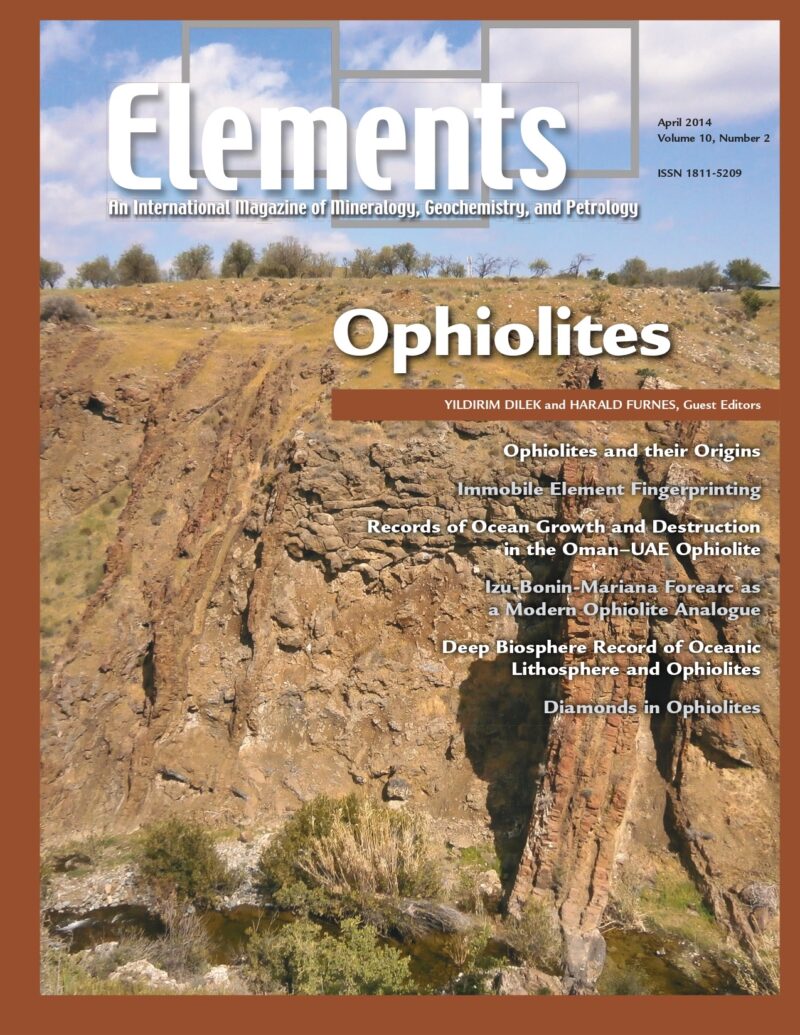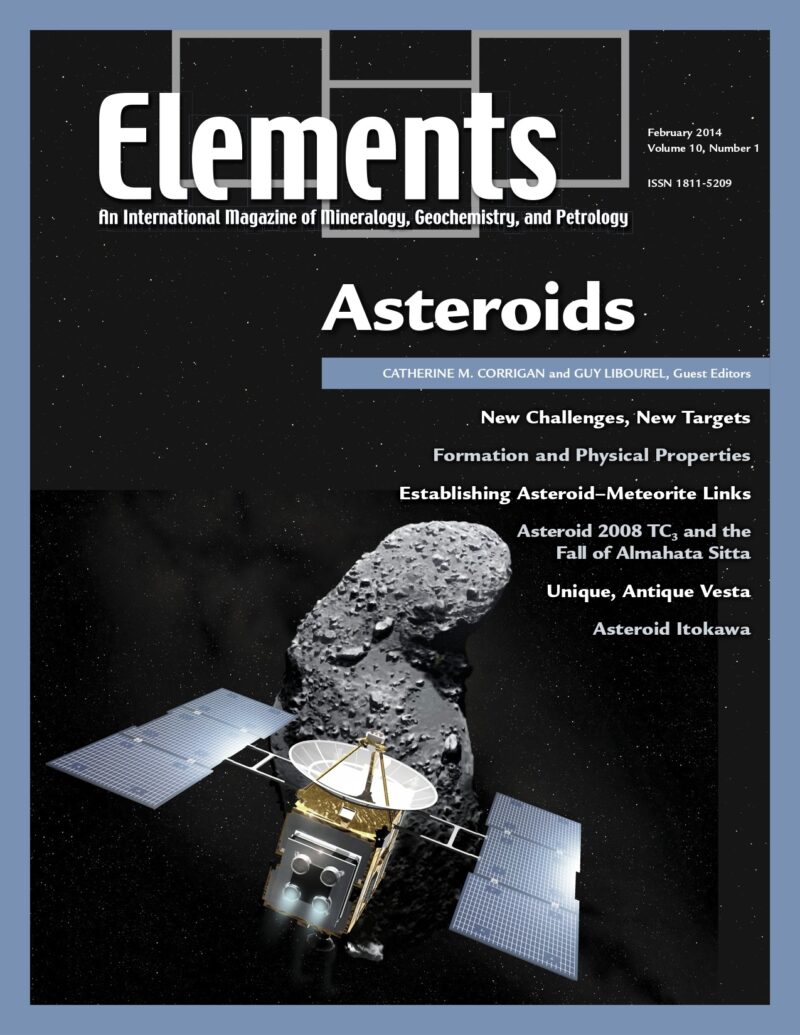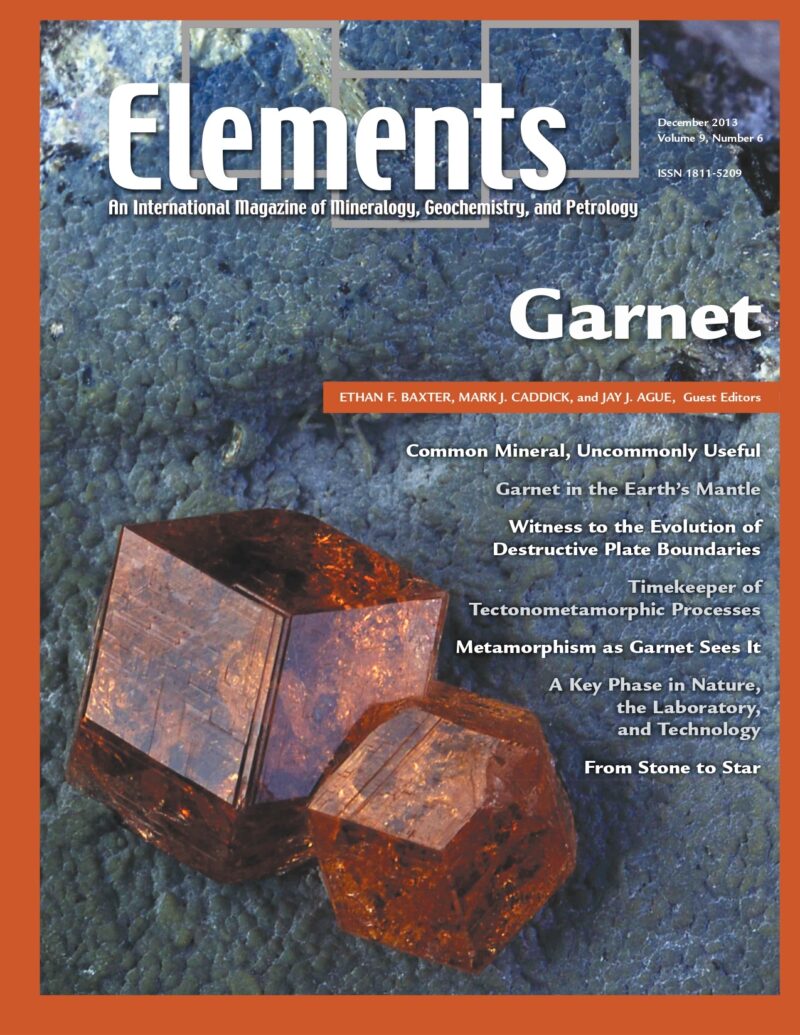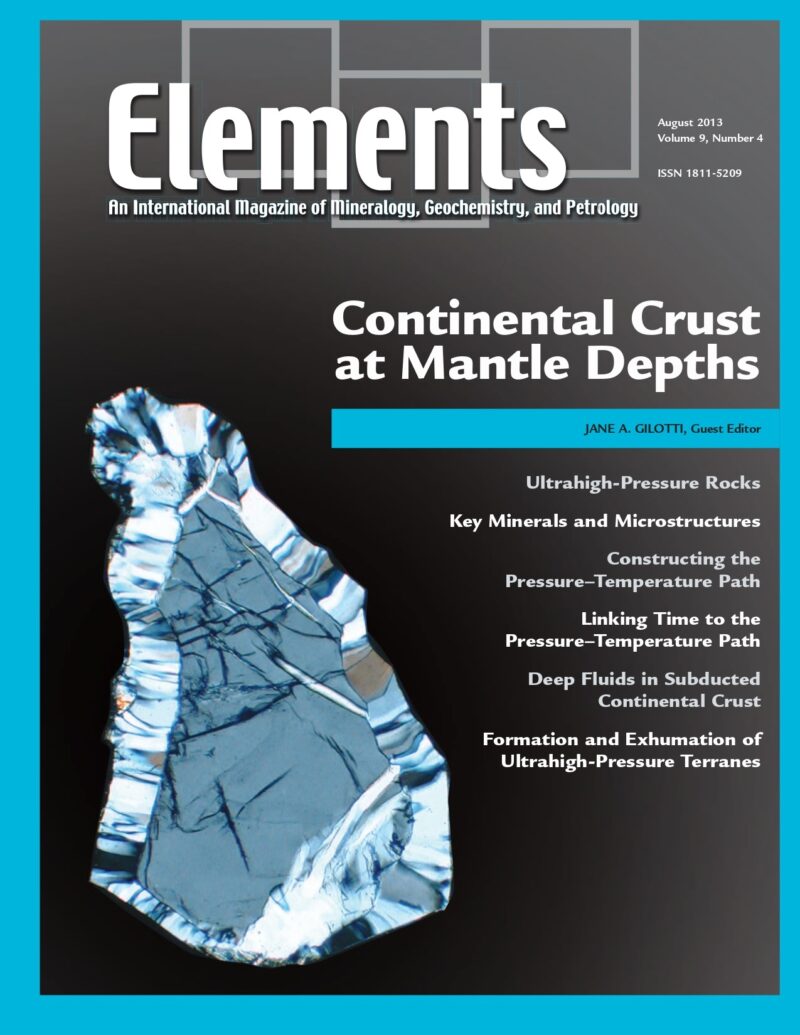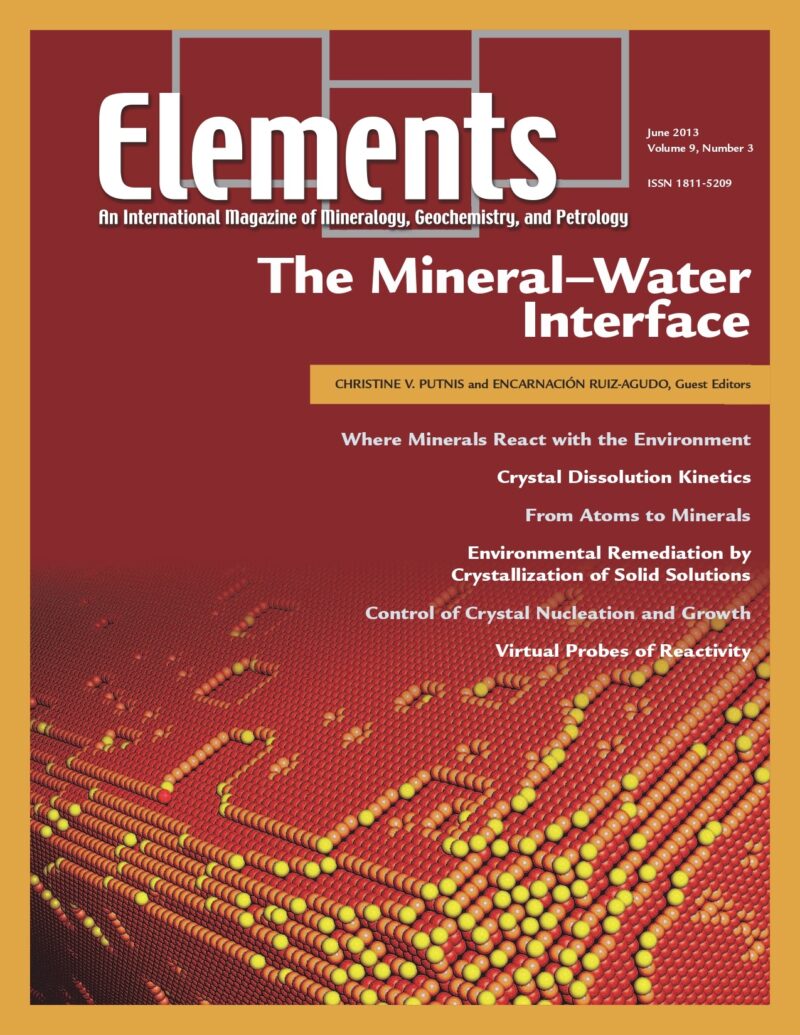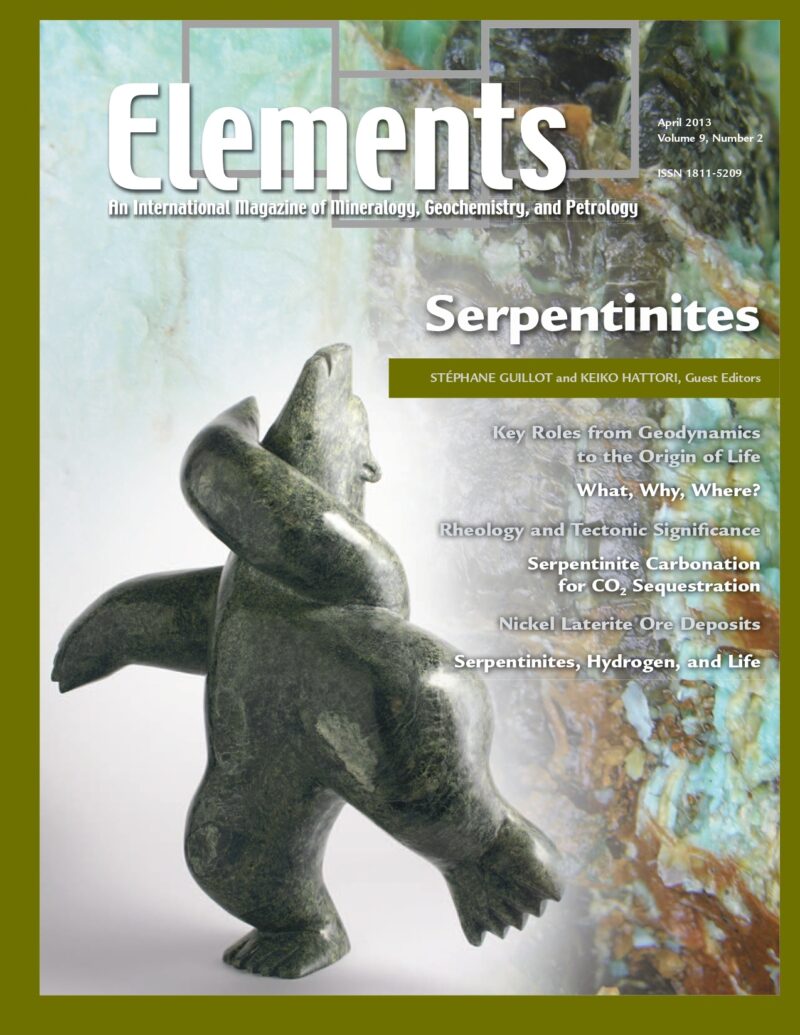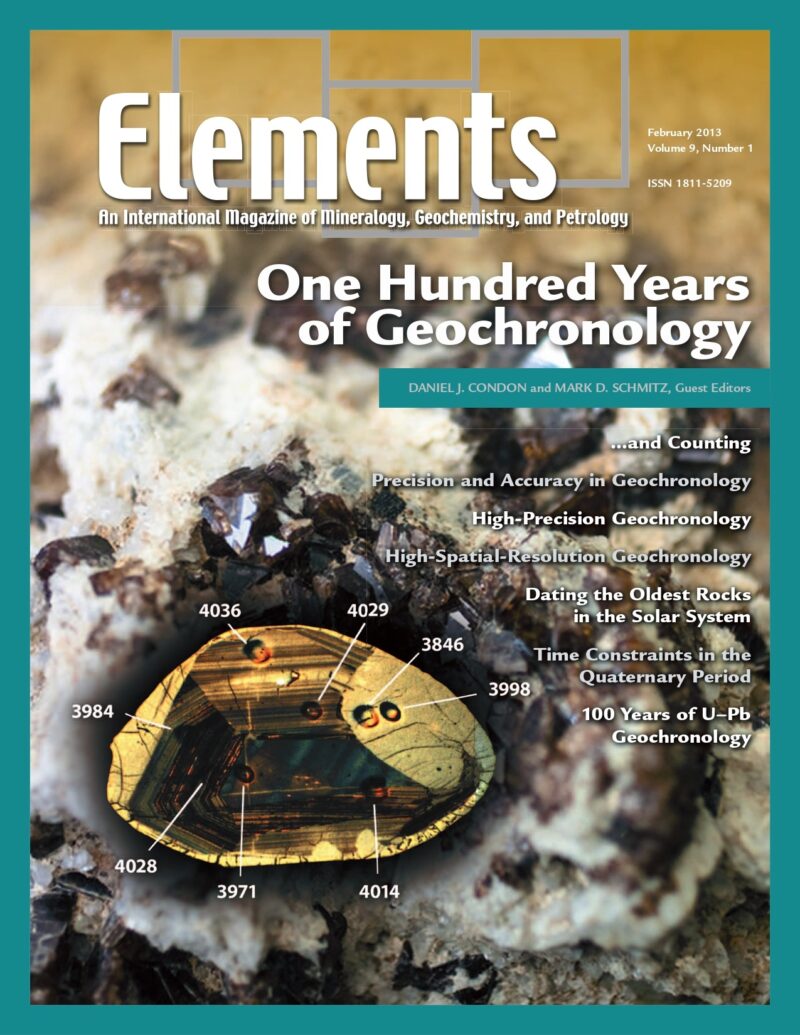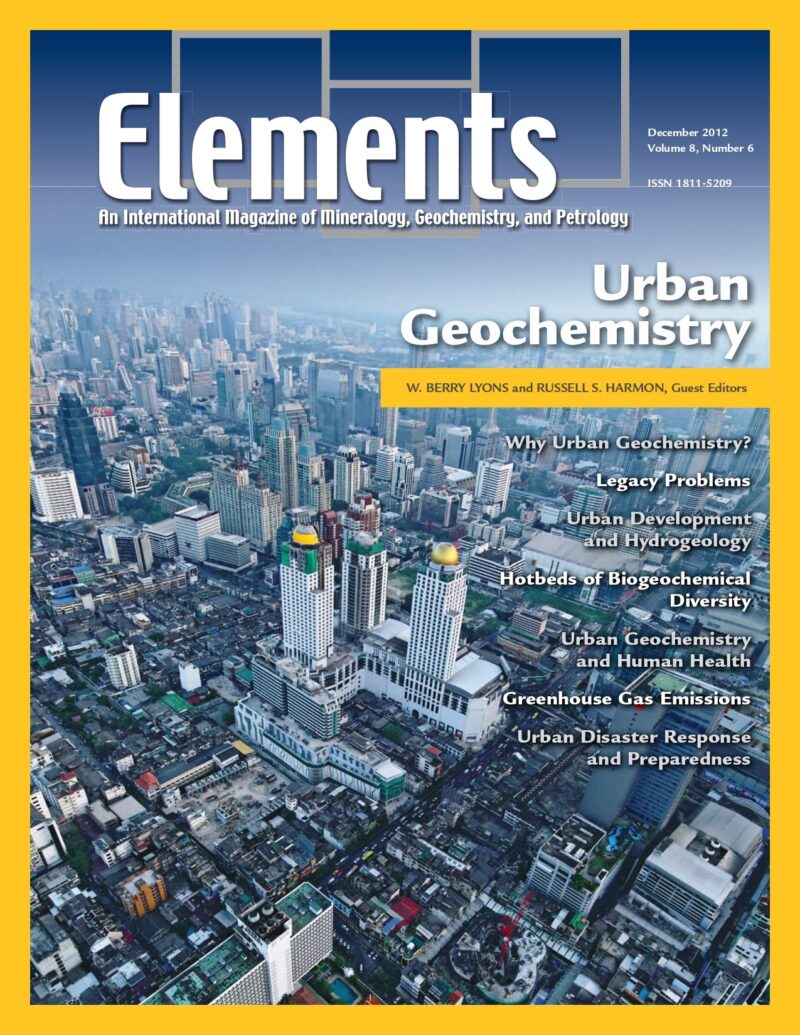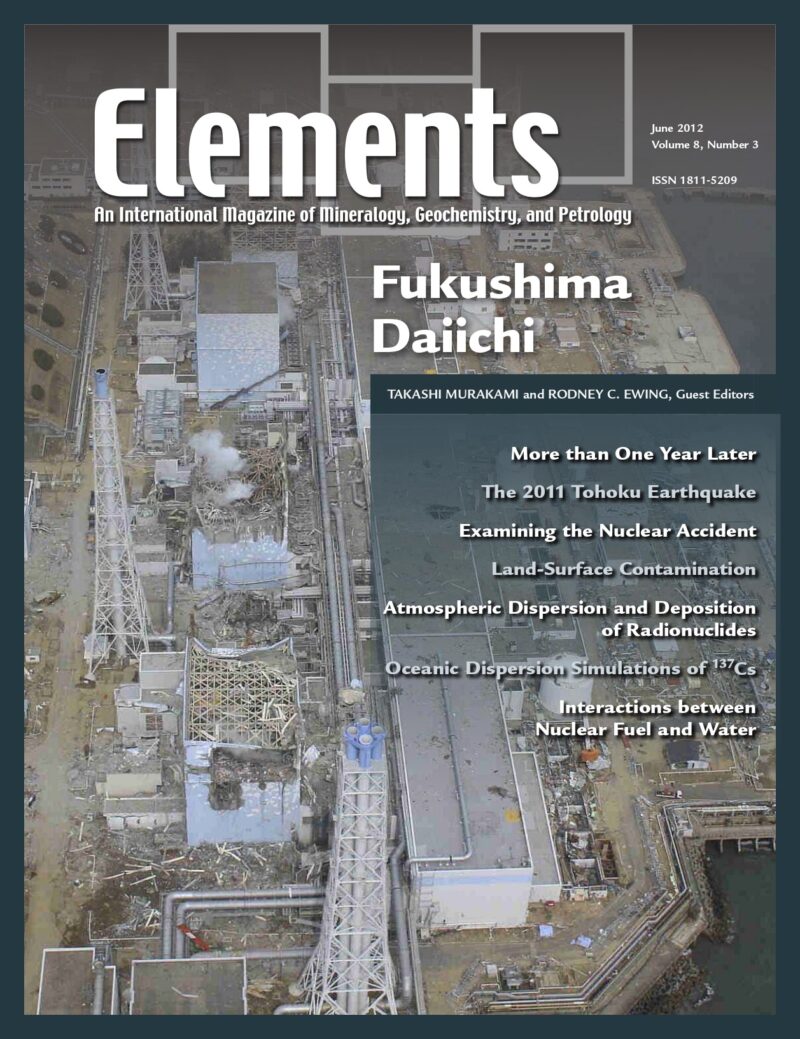-
Ophiolites, April 2014, Vol. 10, No. 2
$20.00This thematic issue covers some of the most exciting advances in ophiolite science. Focus is directed toward ophiolite classification during the formation and destruction of ocean basins; the mineralogy, petrology, and isotope geochemistry of ophiolites; and the trace element behavior of crustal and upper-mantle units in ophiolites.
-
Asteroids, February 2014, Vol. 10, No. 1
$20.00Asteroids number in the millions. Orbiting the Sun between Mars and Jupiter, they are thought to be the shattered remnants of small bodies formed within the young Sun’s solar nebula and that never accreted large enough to become planets.
-
Garnet, December 2013, Vol. 9, No. 6
$20.00Garnet is among the most studied—and most beloved—minerals, owing to its commonality in diverse geologic contexts, its often large euhedral crystals, its sometimes dazzling colors, and its propensity for preserving information about its growth history. Chemically zoned garnet represents a remarkable tool for deciphering metamorphic conditions and the evolving tectonic processes that drive garnet growth over many millions of years.
-
Nitrogen And Its (Biogeocosmo) Chemical Cycling, October 2013, Vol. 9, No. 5
$20.00Nitrogen is the most abundant element in Earth’s atmosphere and a key component of the biosphere. It is also a critical part of the surface/near-surface cycling of nutrients, thus directly impacting our lives.
-
Continental Crust At Mantle Depths, August 2013, Vol. 9, No. 4
$20.00The discovery of diamond and coesite in crustal rocks is compelling evidence that continental material has experienced pressures that can be achieved only at mantle depths. The classical idea that continents are too buoyant to subduct has given way to the notion of density changes driving deep subduction during the collision process, thus enabling some crust to be exhumed to the surface and the rest to sink into the mantle.
-
The Mineral–Water Interface, June 2013, Vol. 9, No. 3
$20.00Reactions occurring at mineral–water interfaces are central to geochemical processes. They affect a wide range of important environmental issues, such as the composition of natural waters, weathering and soil formation, element cycling, biomineralization (including minor-element incorporation), acid mine drainage, and nuclear waste disposal.
-
Serpentinites, April 2013, Vol. 9, No. 2
$20.00Serpentinites, primarily composed of serpentine minerals and formed by hydration of peridotites, increasingly attract the attention of a wide range of scientists, including geophysicists, structural geologists, engineers, and astrobiologists. As serpentinites have wide stability fields, they form in a variety of environments, from the Earth’s surface to the interior of the mantle.
-
One Hundred Years Of Isotope Geochronology, February 2013, Vol. 9, No. 1
$20.00In 1913, Frederick Soddy’s research on the fundamentals of radioactivity led to the discovery of “isotopes.” That same year, Arthur Holmes published his now famous booklet The Age of the Earth.
-
Urban Geochemistry, December 2012, Vol. 8, No. 6
$20.00By 2030, about 60% of the human population will live in cities. Clearly, anthropogenic activities in urban environments affect geochemical cycles, water resources, and the health of ecosystems and humans globally.
-
Rare Earth Elements, October 2012, Vol. 8, No. 5
$20.00Rare earth–based materials have practical applications in transportation, renew able energy, medicine, household items, visual arts, forensic science, and defense, and thus are essential to the progress of humankind. The rapid development and implementation of innovative and green technologies in the past decade have resulted in greatly increased demand for rare earth elements (REE).
-
Granitic Pegmatites, August 2012, Vol. 8, No. 4
$20.00Nothing that geoscientists learn as students prepares them for interpreting rock textures as complex as those found in pegmatites. Understanding the textures and mineral zonation of granitic pegmatites is tantamount to understanding the fundamental process of crystallization.
-
Fukushima Dai-Ichi, June 2012, Vol. 8, No. 3
$20.00On March 11, 2011, an earthquake and tsunami hit Japan, killing more than 20,000 persons, displacing tens of thousands, and causing havoc in the infra structure and economy of the country. In the aftermath of this tragedy, the cooling systems of three of the operating reactors at the Fukushima Daiichi nuclear power station failed and meltdown of the reactor cores occurred.

